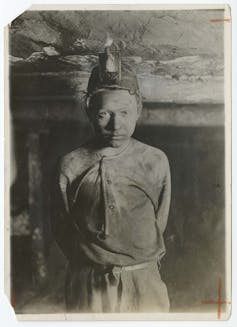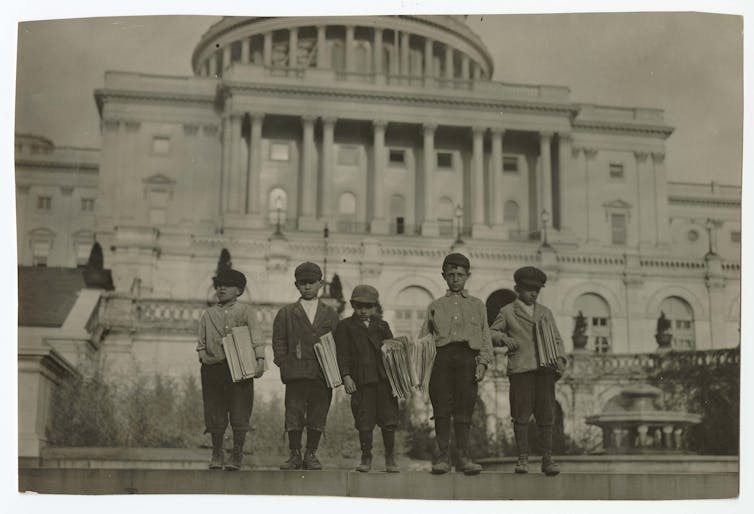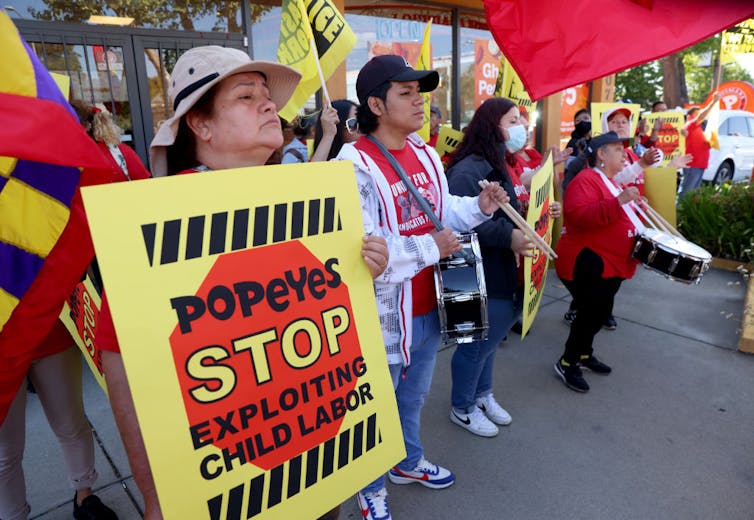While reading the book UnFree, we have been engaging in conversations and discussions on labor laws and ethical environments for the workforce and how unregulated systems have continuously created unsafe spaces for domestic workers in the UAE. These conversations have had a historical past with the popular topic that is touched on in grade schools being American child labor laws. A head curator of the University of Maryland is bringing the discussion up again as they complete a project to digitize a sociologist’s work who had a hand in pushing for the reform of child labor laws. They also are bringing this conversation to light as child labor law violation as still occurring even 2023 and even in the United States.

This sociologist’s name was Lewis Wickes Hine and he photographed over 5,400 photos of American children and their working conditions which ultimately helped make a successful case about the ethics of child labor and in 1916 the Keating-Owen Act was passed which limited working hours for kids and prohibited the interstate of goods that was produced by child labor. Following this congress passed the Fair Labor Standards Act in 1938 and created both restrictions and protections on employing kids.

Hine’s works were incredibly important at allowing the viewers to understand the importance of child labor laws and the unsafe regulations they were forced to endure but he failed to picture the treatment of black children or children who had immigrated to North America as immigration was increasing. This exemption of children leads people viewing the photos to have a skewed idea of what is going on as they only perceive what is outwardly visible to them and this goes on into the ethical issues of photography and vulnerable populations in this day and age. As stated earlier, these conversations are popping back up again and gaining attention in the sociology field as child labor violations and exploitations are starting to be recorded again such as the example of Popeye’s workers protesting outside of a Popeye’s restaurant in California after there were reports of child labor violations.

Back in 2015, the International Labor Organization had emphasized that laborers in Myanmar start employing Hine’s tactics and to start photographing their environments to give a face to the issue as photos are an easy way to put someone else’s experiences into perspective. However, this isn’t an issue just outside of the U.S. yet we mostly only see photos of other countries in our discussions about unfair labor laws. In the example of the Popeye’s employees protesting, the children who were working underage are a vulnerable population and are kept from photos or their stories being told due to ethical concerns of privacy. The question they leave us in the article to discuss is “if Hine’s photographic archive of child laborers is evidence of the power of photography to sway public opinion, does the lack of images in today’s reporting – even if nobly intended – create a disconnect?”.
The US has a child labor problem – recalling an embarrassing past that Americans may think they’ve left behind published June 9th, 2023 by Beth Saunders.
Children remain among the vulnerable populations due to their limited ability to advocate for themselves. Despite the laws that have been passed in efforts to protect them, child labor is not a thing of the past, not even in the United States. Your post reminded me of a New York Times article we read for our theory class last semester regarding migrant children fueling the “new economy of exploitation” in the United States.
https://www.nytimes.com/2023/02/25/us/unaccompanied-migrant-child-workers-exploitation.html#:~:text=The%20Times%20spoke%20with%20more,they%20never%20could%20have%20imagined.